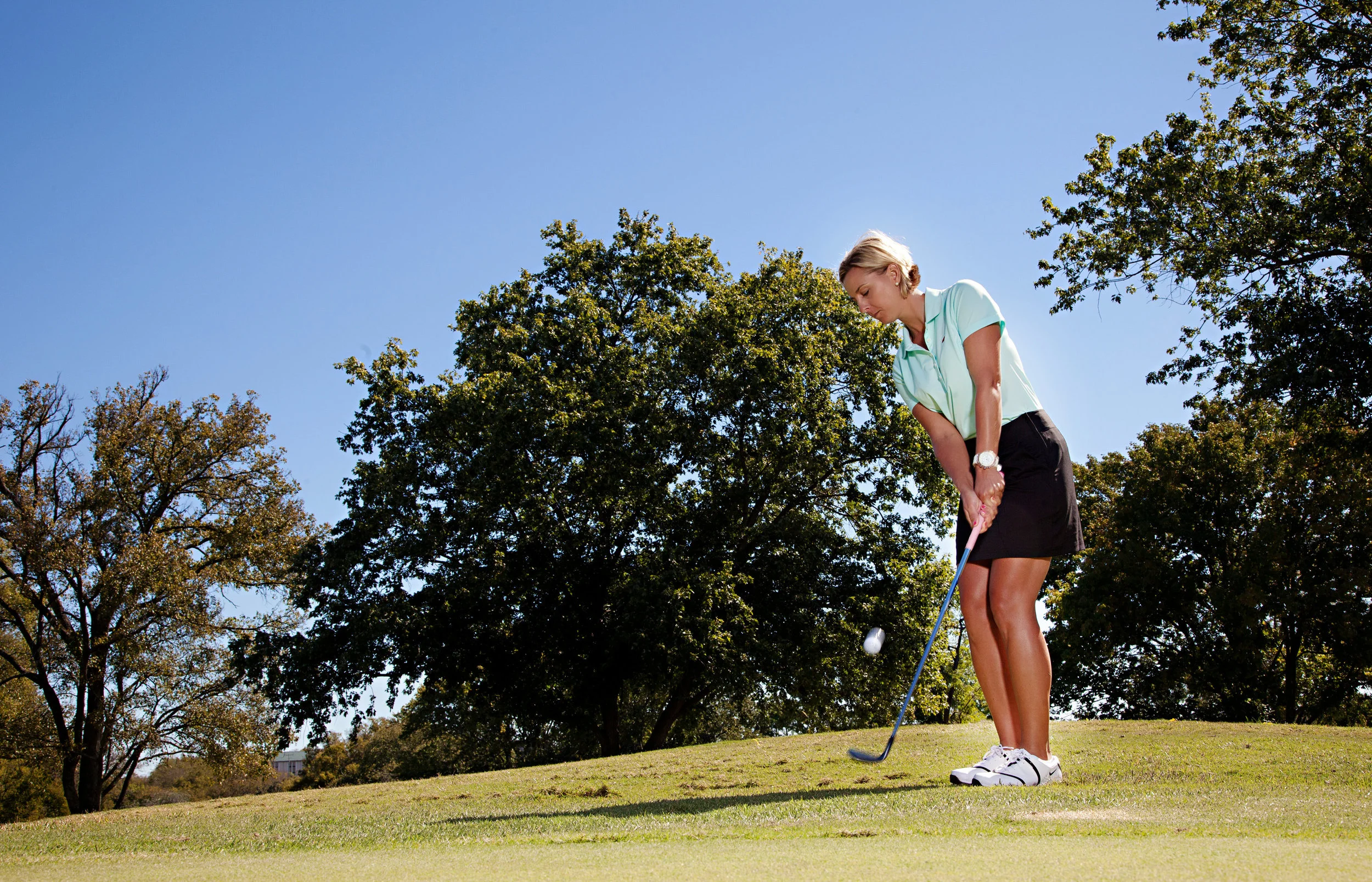Are You Improving?
/Image by Dr. Rick Jensen demonstrating moving the curve to the left through skill building.
If not, don’t feel bad. It’s really not your fault. Chances are you are trying to improve your game under a system that simply does not work. If you are looking for more out of your game, please read this article. My goal is to change the way you think about your golf program going forward. In this article, I want to share with you important information you need to know about improving your game and how to get started on a better training program today. Grab a large glass of your favorite beverage and get comfortable on the couch. This article is a little long but I promise it’s worth your time. And as always, if you have questions about your game and need some guidance, contact me. I look forward to helping you get started in the right direction.
Even with all the fancy technology today it seems to me golfers are still frustrated with their lack of improvement and inabilities to be consistent. Research shows golf is on the decline, especially among young kids, and adults are participating less and less. Of course, there are many factors to consider with this research, but why is golf losing momentum? And why do you feel your game never gets better? Perhaps we need to take a deeper look into how skills are being developed, trained and acquired. Because we all know it’s not fun to play bad golf.
Golf is a sport consisting of many different acquired motor skills that need to transfer to a playing field made up of a variety of conditions. Baseball, hockey, tennis, football and golf all have one thing in common. In order to play or compete, a person needs to develop skills and athletic moves that can move an object to an intended target. And if we can all agree on this statement, then golf should be taught the same way you would learn to play hockey. For example, if your child wanted to play hockey would you give them a few lessons and then throw them in the game? Absolutely not! They would get killed. You would sign them up for a hockey league that holds regular practice sessions where they can spend a few years learning and developing skills to play in a game or competition. For most golfers who are learning or have goals to improve, you’re current training program or lack there of is probably killing your game.
What does a productive training program look like?
The priority for any golfer looking to improve is to reach the stage of unconscious competence. If you are unfamiliar with the four stages of mastery, this is the final stage where an individual can perform a task without thinking. Imagine a firefighter learning a new skill and never reaching this final stage of mastery. Going into a burning building would be a scary task. This may even be the feeling some of you have when you show up to the golf course! Nerves that keep you up all night or a heart rate that beats twice as fast when you’re chipping all stem from one major problem. You have not trained your skills properly and your brain knows you’re not prepared. Here’s a new plan for your game. Design a program that trains your brain to process information and then execute the desired shot without any thoughts. How nice would that feel when you’re standing over a 6-foot putt you NEED to make.
Stages of Skill Development
Stage 1 is the understanding clear concepts phase. This is when a golfer participates in lessons, reads a book or watches a video. Information from an instructor will help the golfer build a clear concept of what needs to be accomplished. This is also the stage where you learn about ball control and how to move the ball to an intended target. To become more consistent you need to understand how to make good contract with the golf ball, how the clubhead affects the ball flight and what athletic moves feel like in the golf swing. Remember in this phase you are training your brain. So your attention needs to be on club delivery and ball flight reactions. You DO NOT want to be concerned with what your right elbow is doing for example. If your brain is concerned with keeping your head down then your brain thinks golf is all about keeping your head down. And it’s not! Have you ever seen Annika Sorenstam hit a golf ball? Her eyes were moving in the direction of the target before she hit the ball. In this phase be very careful what information you are going to accept and disregard. Instead of picking up new swing thoughts, focus on skill building and ball control.
For many golfers this is where progress stops for a number of reasons. First of all, we live in a world of information overload. Between the Golf Channel, Golf Digest and the latest swing thought from your playing partners, your brain is confused on what to do and how to do it. After every swing we tend to fix what went wrong instead of sticking to the skills required to perform the shot. And instead of mastering skills we search for the next miracle swing thought. Also, research shows the day after we listen to a seminar or perhaps your golf instructor, the next day you will forget 50% of what you learned and the following week you will only remember 5%. To retain information and build a skill, take good notes that can be reviewed constantly and participate in hours of practice. Once you develop clear concepts and understand ball flight, it’s time to take the skills and train them through the phases of mastery.
Stage 2 is the practice or learning phase. This is where you take the knowledge and information and train the skill to perform under a variety of conditions. According to the book, Make it Stick, “learning is acquiring knowledge and skills and having them readily available from memory so you can make sense of future problems and opportunities.” Here is where it gets tricky for the average golfer. Understanding the purpose of a practice session, how to practice and how many hours should I practice? And to remember that during a practice session you are “learning” not perfecting.
"I Can Do This"
Practice sessions should be designed to give your brain memories of “I can do this.” A productive practice session includes activities that have a task or a goal to accomplish and when the task is completed move on to another activity. Your brain learns best with short bursts of different activities. For instance, take 10 balls and hit 1 shot around the chipping green. If you want to be a 10-handicap golfer, set a goal of making 8 out of 10 balls in a 6-foot circle (3 feet on each side.) After hitting 10 balls move onto a different shot. Do this rotation 10 times hitting 10 different shots. Do not try and perfect one particular shot. Keep your score to see how you improve over a 6-week program. After 6 weeks your brain will remember all the times you hit 8 out of 10 balls in the circle and your confidence will be extremely high when you are under pressure on the golf course.
During a practice session you also want to train your decision-making skills. Use the time to figure out club selection, shot variety and risk-reward situations. Remember you will never have the same shot on the golf course so you need to be prepared to hit any shot if you want to play your best golf. Visualization is an important part of decision-making skills. When your brain knows the desired ball flight it will tell the muscles in your body what to do. In your practice sessions you are training your brain to make decisions based on a variety of course conditions. Keep in mind when you are on the golf course and say, “don’t snap hook this.” Your brain only hears "snap hook this." And your muscles will make a move to snap hook the ball. Visualizing the desired ball flight, especially around the greens, is crucial to get the brain and body working together in a positive way. During the practice session pay attention to the height of the ball and the carry distance to create memories for later use.
And finally practice sessions should include self-management skills. For example, learning to cope with failure. The reality is golf is a game of constant failures. 90% of the time you will not execute the exact shot you intended to hit and you need to learn how to deal with this degree of failure. And for many of us, failure and imperfection is not something we have been trained to accept. Ask any good golfer how many shots a round they hit that are executed exactly how they imagined and you may get a number around 10. Managing yourself means remembering you are human and will never be perfect. A post shot routine that includes judgment, should of, whining and a negative attitude will only disturb the learning process and in time stall out your progress of achieving your desire level of performance.
Take it to The Course
Reaching the final stages of mastery and skill acquisition does not happen without hours of hard work. Most golfers don’t get here because they don’t wait for this stage. If you are serious about improving and taking your game to the course, pick one concept and build it through hours of repetition. Make the concept part of your daily routine. Eventually you will reach the stage of unconscious competence and your skills will become second nature. And you will finally get to enjoy a round of golf without frustration, confusion and too many swing thoughts!
I hope you take away from this article a new perspective on learning golf and improving your skills. Instead of showing up to a lesson looking to be “fixed,” participate in a program that will encourage skill development. Get with your coach and together the two of you can design a long-term plan for your game that includes instruction and practice sessions. And remember, your desired results will not happen over night. The process takes time and patience. If you have a major tournament coming up, don’t start the week before. Build your skills over at least a 6-month period so your brain is fully prepared for any situation that may arise.






